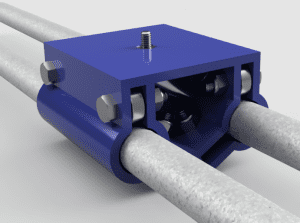Overview
Adding motion to time-lapse photography and video shots adds depth and interest to your scene. Doing this, however, can be a tricky task. Time-lapses using long exposures need to have a still scene during each exposure. Movement of the camera must be made in-between shots. To do this, a stable rig is needed, as is control of the motion and camera shutter.
Such systems are available commercially, but are quite expensive. The goal of this project is to develop a cost effective (i.e. cheap), DIY, 3D printed camera dolly system that can be used for long exposure time-lapse photography. The basic idea is to mount a camera on a carriage which rolls smoothly along two metal rails, and is controlled with a motor and on-board controller.
Inspiration for this design comes from the Mostly Printed CNC project.
Design
This project is still in prototype stage. More details including STL files for printing are available on Thingiverse.com.
The system design allows for easy manufacturing, using any 3D printer (with minimum 150mm x 150mm print area), and uses common hardware available at most hardware stores. This helps to keep costs at a minimum. Assembly of the system is accomplished with minimal tools. A screwdriver or hex key and a wrench are all that is required, depending on the selected hardware.
 The carriage accommodates ball heads, and other types of camera mounts, or can be attached directly to the camera, minimizing gear.
The carriage accommodates ball heads, and other types of camera mounts, or can be attached directly to the camera, minimizing gear.
The rollers are made from skate bearings (type 608—commonly found in roller blades, skateboards, etc.), which provide smooth, effortless motion. The bearings surround the tube rails and contact at three points, preventing the carriage from coming off the rails at any angle.
The tracks are made of EMT conduit, which is cheap and easy to find at the hardware store. EMT is typically sold in lengths of 10′, which should be plenty long enough for most applications. The brackets supporting the rails can rest on the ground without legs, or can accept legs made of the same EMT conduit. An offset leg attachment is also available to allow for leg height adjustment.
 Automatic motion of the carriage is accomplished by a cable pulled by a stepper motor. The Motion Controller controls the drive motor as well as the camera shutter release for synchronized move-shoot-move sequences. Continuous motion at variable speeds can also be configured.
Automatic motion of the carriage is accomplished by a cable pulled by a stepper motor. The Motion Controller controls the drive motor as well as the camera shutter release for synchronized move-shoot-move sequences. Continuous motion at variable speeds can also be configured.



